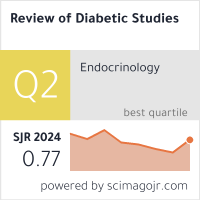Clinical Study Of Conduction Block In Acute St Elevation Myocardial Infarction
DOI:
https://doi.org/10.70082/hpzkd547Keywords:
Acute Myocardial Infarction, Atrioventricular Block, Conduction Disturbances, Electrocardiography, Reperfusion Therapy.Abstract
There is clinical importance in identifying abnormalities as a complication of acute ST-elevation myocardial infarction (STEMI), but current-day statistics of conducting abnormalities during the post-reperfusion period are scarce, particularly in developing countries.
Objective: The purpose of this research was to examine the occurrence, trend, and prognostic significance of conduction abnormalities in STEMI and their relationship with the site of infarction and in-hospital outcomes.
Methods: In this cross-sectional study, 100 patients with acute STEMI were assessed by using a clinical approach, serial electrocardiography, and other pertinent biochemical examinations. To establish associations, chi-square and logistic regression tests were used to conduct a statistical analysis.
Results: Abnormalities in conduction were detected in 29% of patients, most often atrioventricular (AV) nodal blocks (74%), the first-degree AV block (27.6) and complete heart block (20.7) were the most common ones. AV nodal blocks (p < 0.05) were significantly associated with inferior-wall infarctions, with anterior-wall infarctions more frequently being complicated by intraventricular conduction delays. The majority of the conduction blocks (93.1) were present on admission and temporary. Permanent pacing was necessary in 5 % of cases, and mortality (4%) was much greater in patients with conduction disturbances (p = 0.031).
Conclusion: Conduction abnormalities are also still prevalent in STEMI, particularly in inferior-wall infarctions. Undertaking early detection, rhythm monitoring, and timely reperfusion are all important in minimising the morbidity and mortality of acute coronary care.
Downloads
Published
Issue
Section
License

This work is licensed under a Creative Commons Attribution-ShareAlike 4.0 International License.


